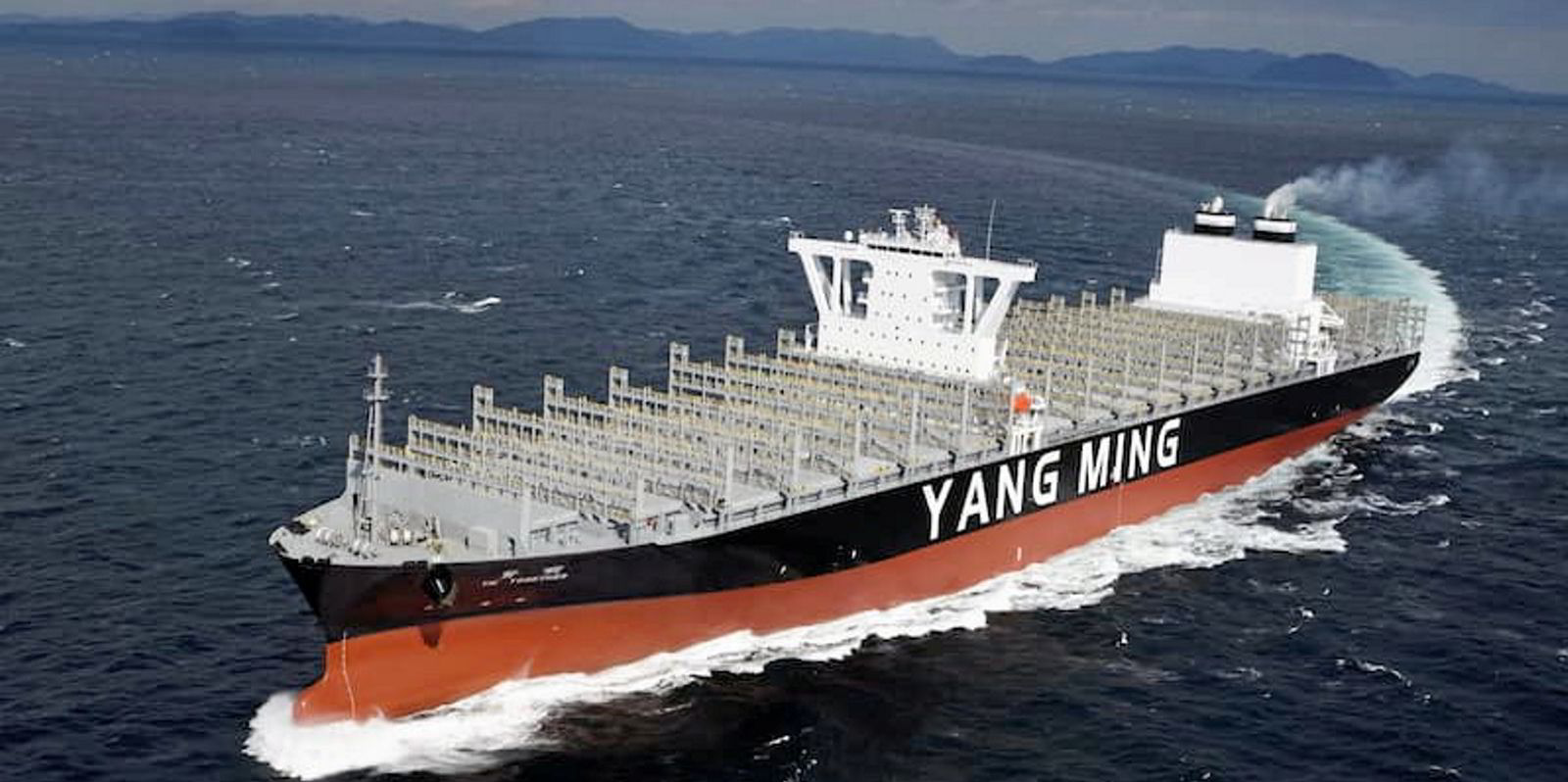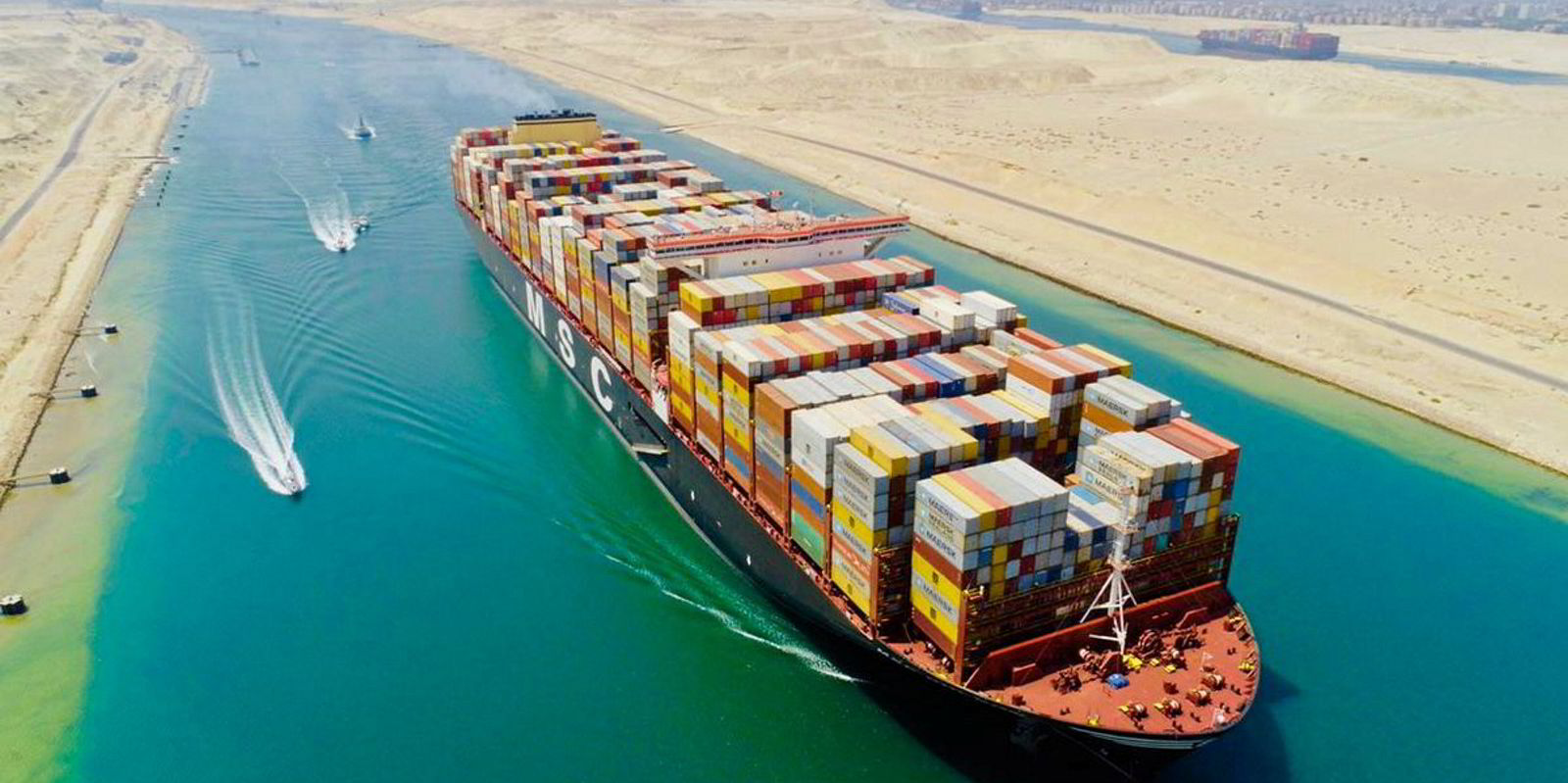Container freight rates have hit a four-year-low ahead of the Golden Week holidays, suggesting that efforts by liner operators to manage capacity are catastrophically failing.
Spot rates dropped 19.2% in the week to 19 September to $1,242 per forty-foot equivalent unit (feu), according to the Freightos Baltic Index (FBX).
That is the lowest the FBX — a measure of rates on 12 key liner trades — has been since October 2019.
Freight rates have fallen despite ongoing efforts by liner operators to reduce and manage capacity through blanked sailings and service suspensions.
On Wednesday, members of THE Alliance (THEA) announced the suspension of a transpacific service “in consideration of the present market situation”.
THEA members Yang Ming Marine Transport, Hapag Lloyd, Ocean Network Express (ONE) and HMM are suspending their Transpacific-Northwest Coast (PN3) Service indefinitely. The service operated with seven containerships of 8,500 to 11,860 teu.
Several services have been dropped by liner operators desperate to stop the rot where freight rates are concerned.
While the number of blank sailings normally increases in the run-up to the Golden Week holiday in early October, this year has been exceptional.
Maersk and MSC Mediterranean Shipping Company are expected to cancel 31 departures while THEA partners will blank another 12, according to Alphaliner estimates.
But that has not prevented spot rates from falling on key east-west trades.

From Asia to the US West Coast, spot rates dropped to $1,726 per feu this week, down from over $2,000 per feu last month.
Last Friday saw the Shanghai Containerized Freight Index (SCFI) drop 5.1%, its largest fall since November 2022.
“Sharp rate drops, sometimes double-digit, are being seen on the main East-West corridor but also on the so fare more preserved trade routes to West Africa and South America,” says Alphaliner.
Hard hit Europe
The fall in spot rates appears most calamitous on the Asia to North Europe trades, where rates fell 35% fall from $1,542 to $999 per feu in the past week.
The FBX has only ever once – on 2 April 2018 – registered a fall below the $1,000 per feu level on this trade.
Carriers have responded by scrapping a record 14% of scheduled sailing being blanked on the trade so far, according to Maersk figures.
Yet there appears little prospect for a rate rebound in October.
Analyst Linerlytica argues that the planned capacity cuts over Golden Week holidays will be insufficient to stem the decline.
The fall in freight rates is mirrored on the trade from Asia to the US East Coast where spot rates dropped to $2,650 per feu, down from over $3,000 a week earlier.
Rates are falling despite the implementation of low-water restrictions by the Panama Canal Authority.
That is partly because carriers have added 20% in incremental capacity on the trade from Asia to the US East Coast, according to Linerlytica.
The analyst argues supply would remain challenging as carriers are unwilling to forego market share, the analyst suggested.
Charter market pressure
The headwinds in the freight market are impacting the charter market which has been resilient in the face of pressure.
That resilience may not necessarily last due to the massive supply of vessels slated to be delivered this year and next, according to Fearnley Securities.
“We continue to expect further pressure on rates as there is scheduled more than 2m teu of newbuild capacity to hit the water by the end of 2023, whilst 2024 will see another 3m teu in new added capacity,” the investment bank noted.
“This coupled with container trade growth expected to be next to zero this year could see rate pressure intensify as we head out of the seasonality in container shipping,” it added.
Even if demand picks up, rates are expected to remain under pressure.
“To put things in perspective, the world container fleet used to grow by about 1m teu ‘only’ per year in the past decade. For sure, the road ahead promises to be bumpy,” Alphaliner noted.





